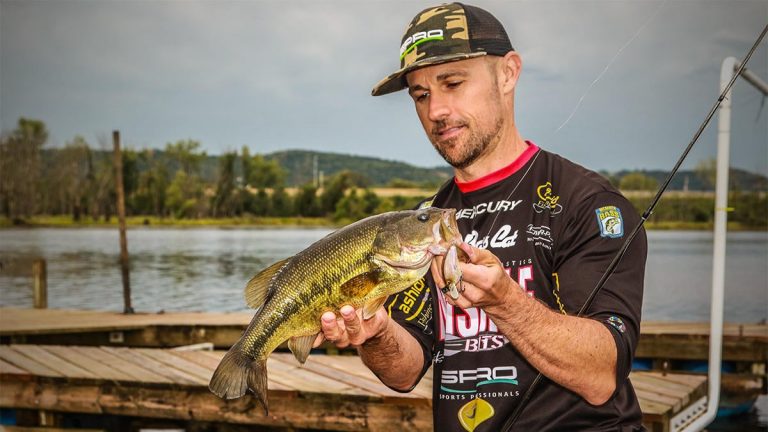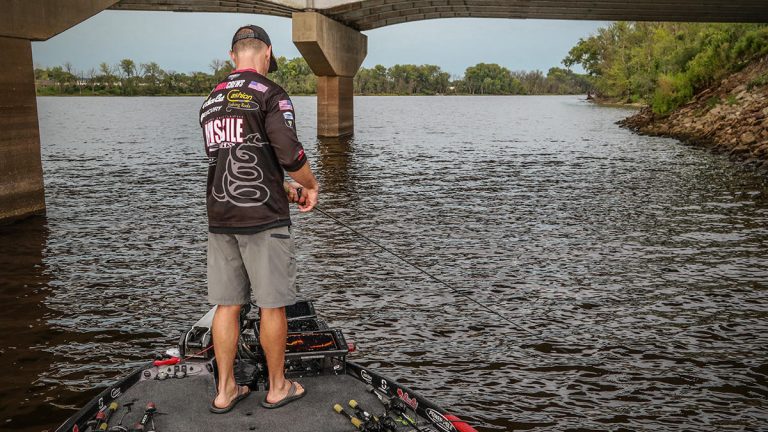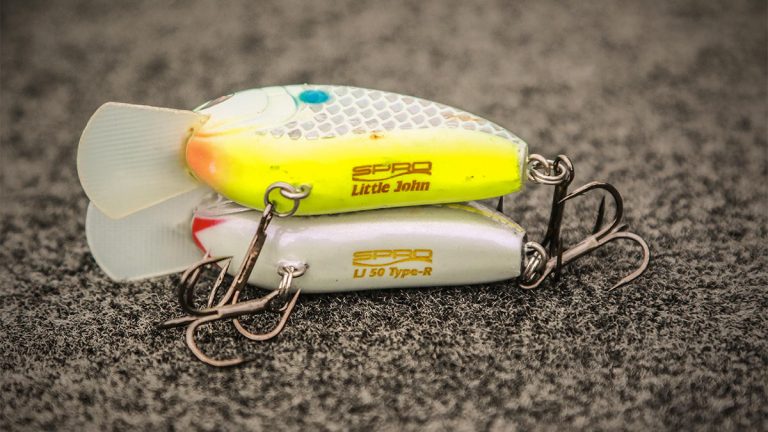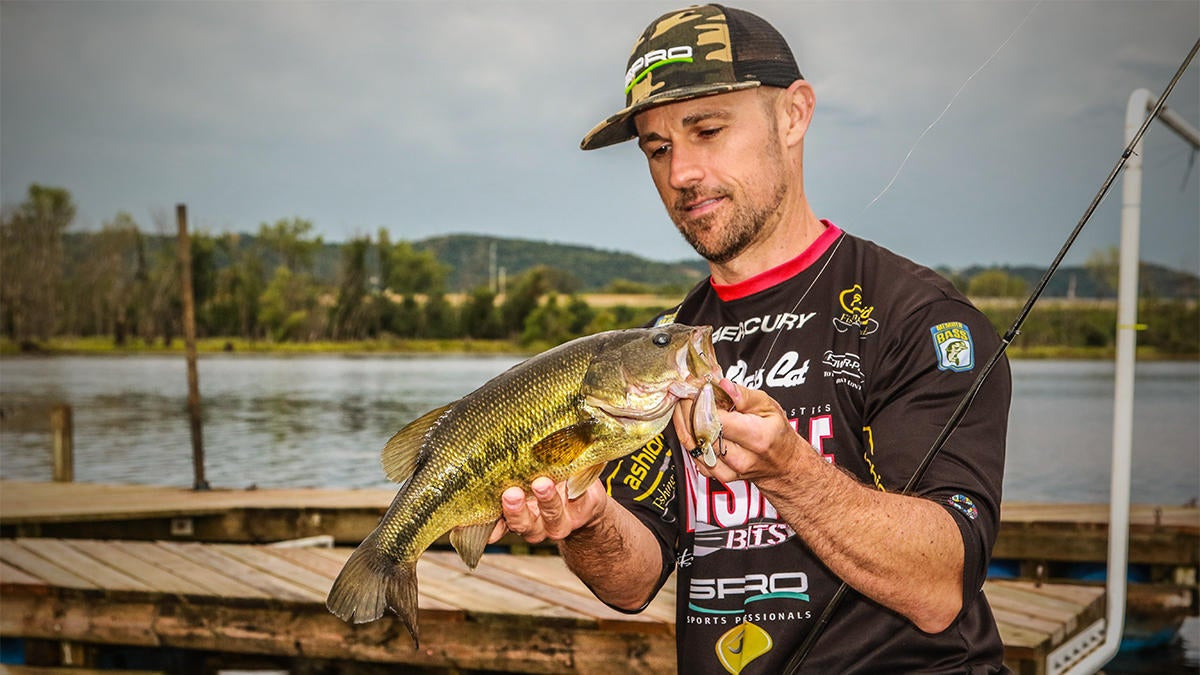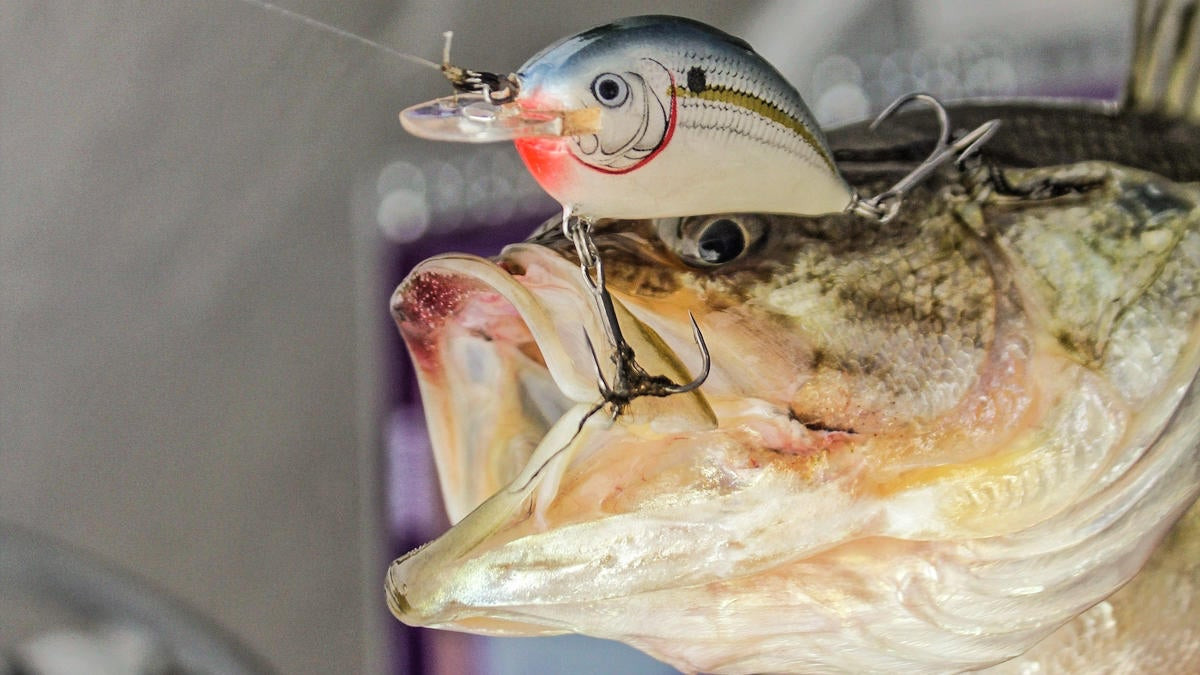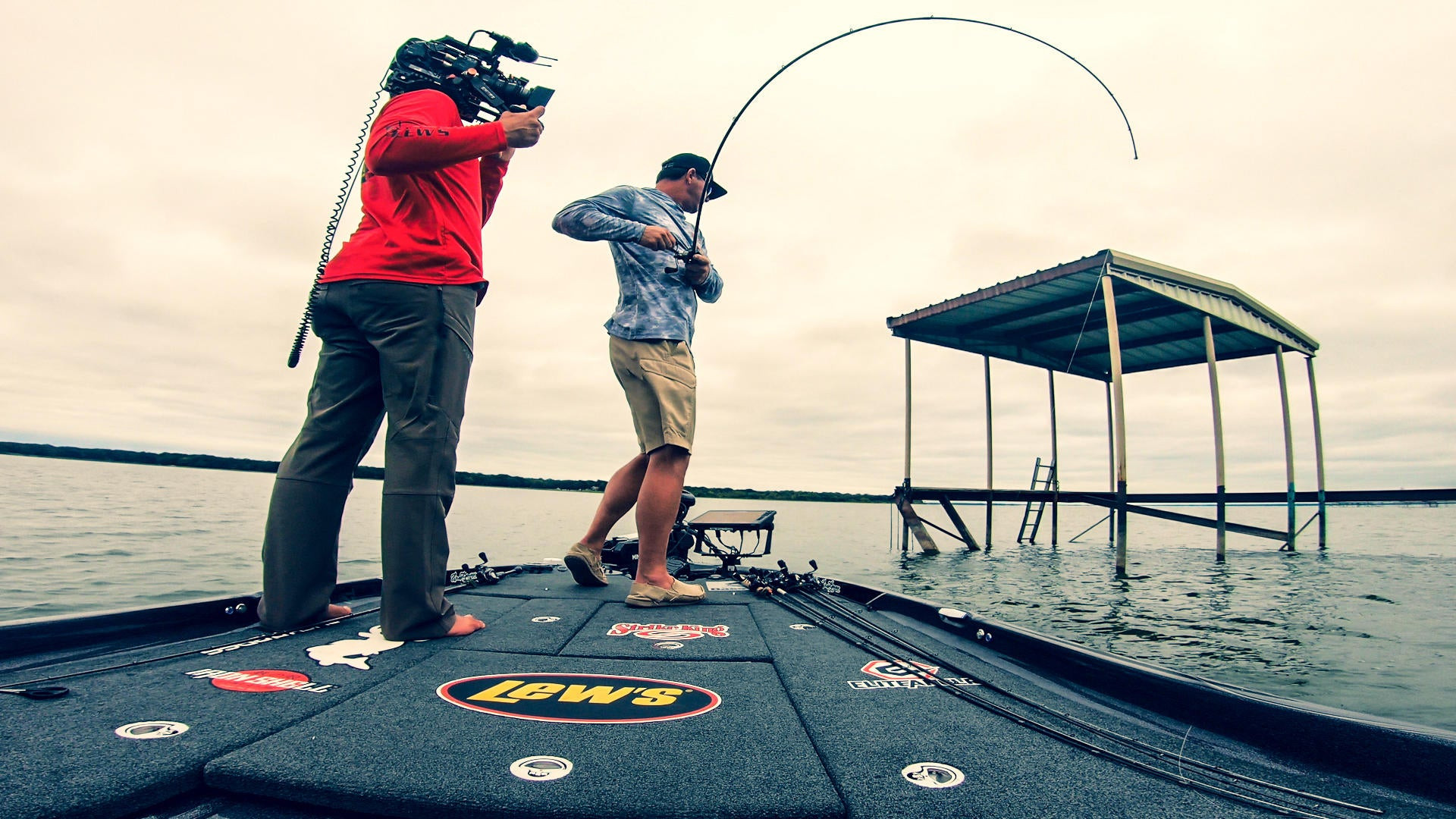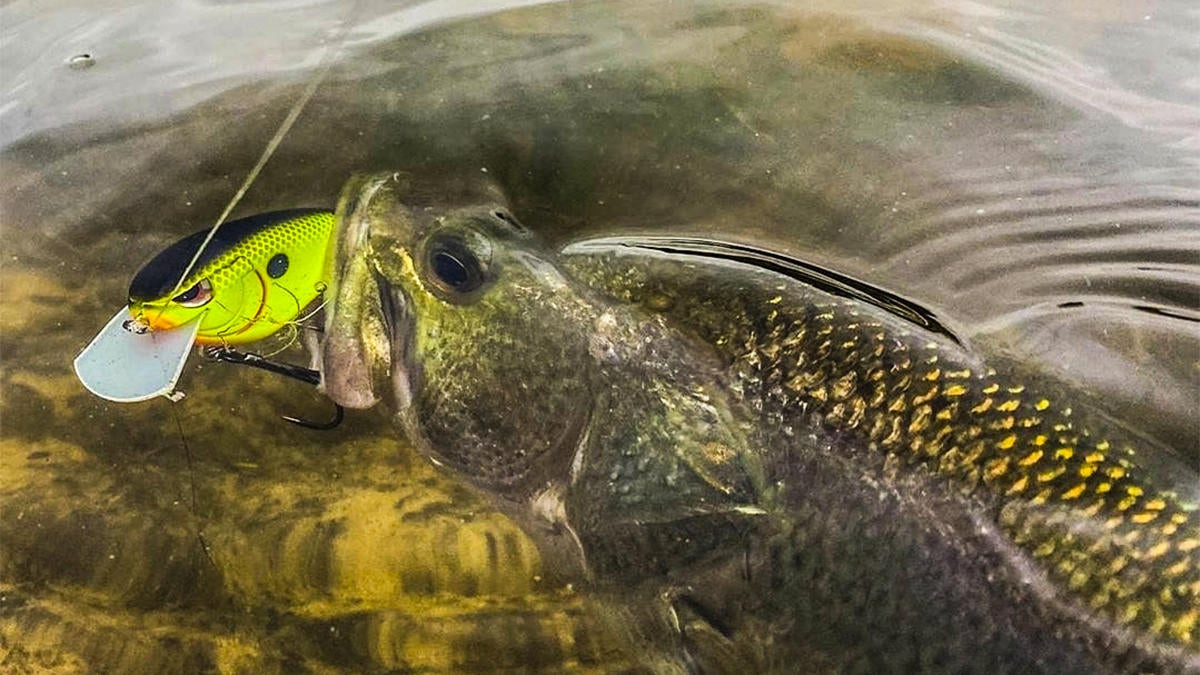Here’s what attracts Crews’ attention.
Bridge pilings: To mimic the typically smaller size fall baitfish, Crews favors the SPRO Little John Micro DD. This modest profile bait runs 7-8 feet and emits a tight wobble that interests hungry fish.
“Anytime you’re cranking in the fall, you want to make as long a cast as possible and cover as much water as you can,” Crews said. “Also, keeping your retrieves slightly erratic – starting and stopping – is a key.
“I’ve seen times in the fall when canning fast triggers them. So you have to alternate between the two to see what triggers them.”
As for proximity, Crews offers the following advice.
“Hitting the piling is definitely a trigger, but in the fall, you don’t necessarily always have to hit the piling. A lot of times, you can be cranking near a piling and have an erratic retrieve and the next thing you know, it’s loaded up.”
Riprap: Noting that a small stretch of bridge riprap in the creek is easier to dissect than a mile-long causeway, Crews starts with a SPRO Baby Fat John 50, which runs 2 feet and stays in front of the shallower fish.
“A lot of times, those fish will be pointed right up on the bank, looking at the rocks,” he said. “If you throw out in four feet or more, you’re fishing behind the fish.”
For the less active fish sitting off the riprap, Crews switches to the Little John Micro DD. Banging this bait of those outer rocks tempts the fish laying off between feeds.
“There have been times I’ve fish shallow, then turned around with a deeper crankbait and caught fish behind (my original depth). Crews said. “I typically go for the aggressive ones first, but because those fish move in the fall, I’ll often catch fish off the same stretch of riprap at multiple times throughout the day.”
Flats with wood: “Flats are good in the fall because the baitfish come up from the deep water and get up on top of them to feed or to warm on the sun,” Crews said. “That cover is a stopping point for the fish to hide behind. Because the fish will be on the move with the baitfish, if I see a piece of isolated wood, I’m gong to hit it 4-5 times throughout the day and if I catch a fish – especially if it’s a good one – I’ll come back multiple times.”
For shallow flats, Crews throws the SPRO Fat John 50. If it’s a deeper spot, he goes with the SPRO Fat John 60, a slightly larger bait that’ll bang off the wood to trigger bites.
Docks: The Fat John also does a good job of tracing docks with a hunting action that probably looks a lot like a fleeing baitfish. While paralleling the face, running down the sides, probing corners and reaching into boat slips, Crews focuses on varying his retrieve.
“I’ll maintain a straight retrieve, but I’ll speed up and slow down within a cast,” he said.
”I’ll speed up three to four turns, slow it down, then speed up again. That gives them a little different vibration.”
Brush: Playing a role similar to wood on the flats, shallow brush offers a temporary feeding spot that Crews hits with the SPRO Fat John. Later in the fall, when the baitfish pull off the bank and hover around deeper brush, he likes a Little John Baby DD 60, which runs 10-12.
“Overall, the brush tends to be better when it’s sunny, but the presence of baitfish is most important,” Crews said.




